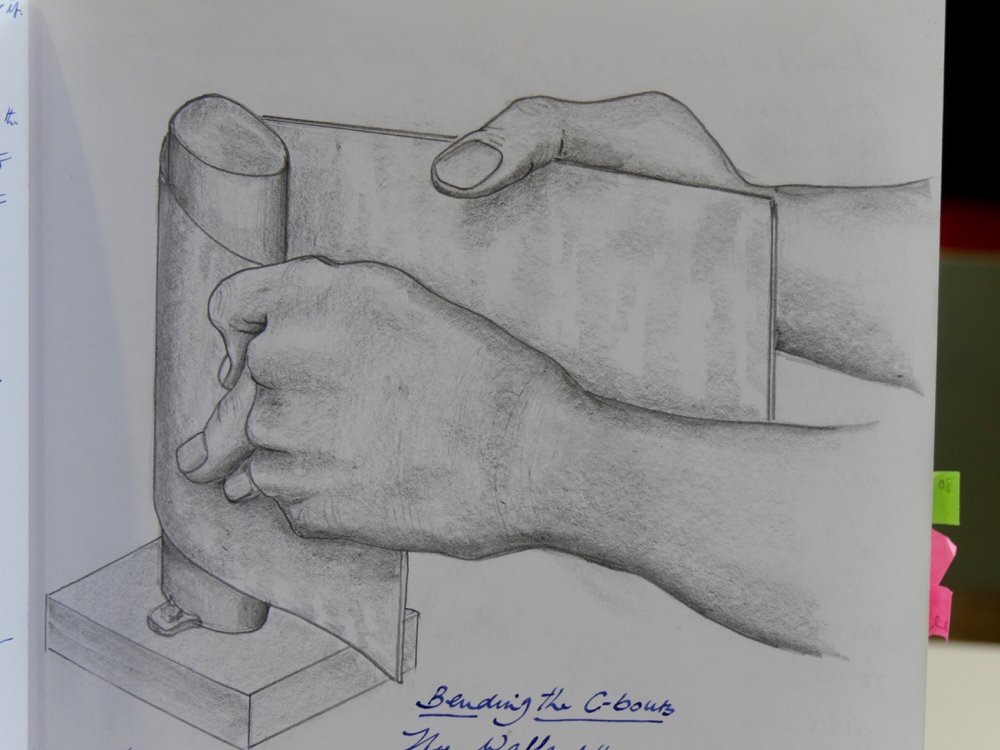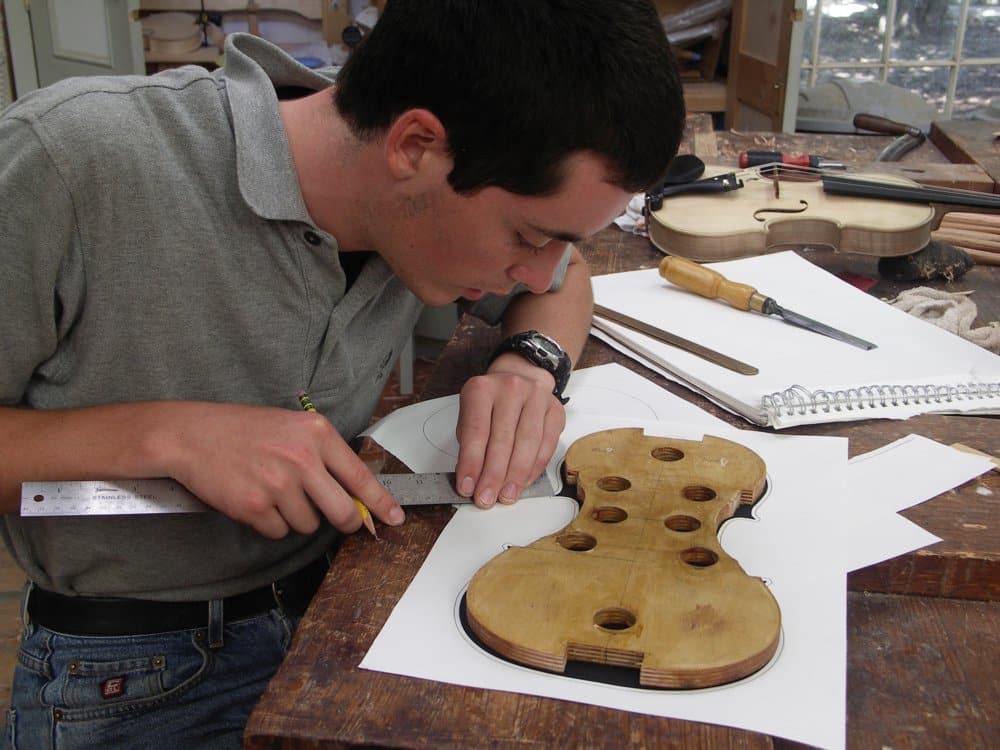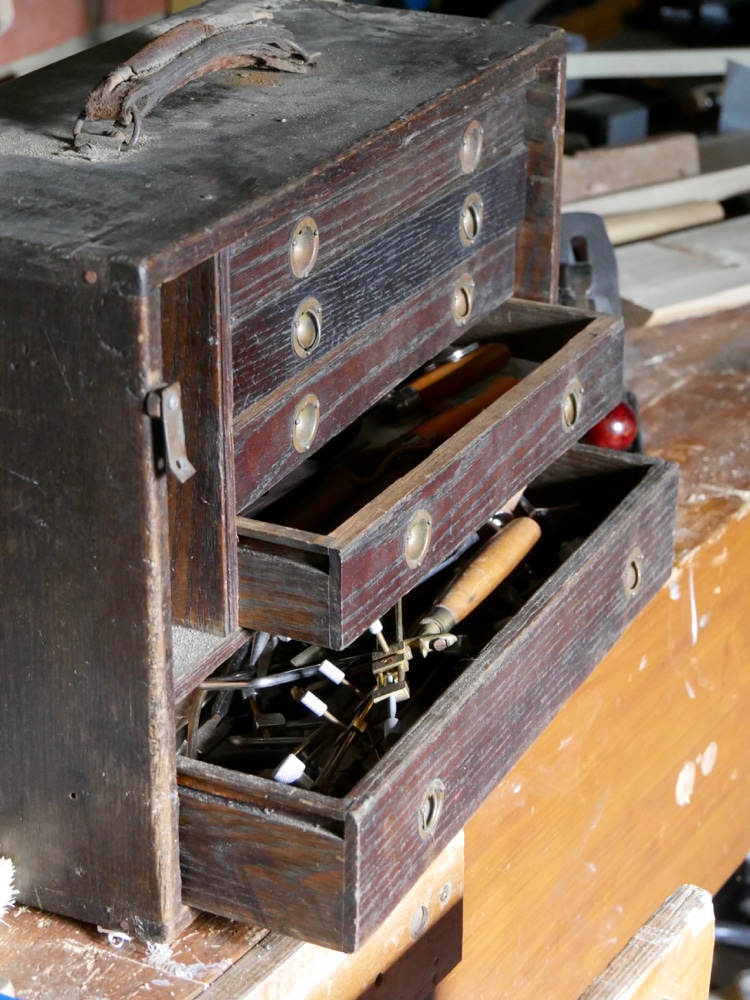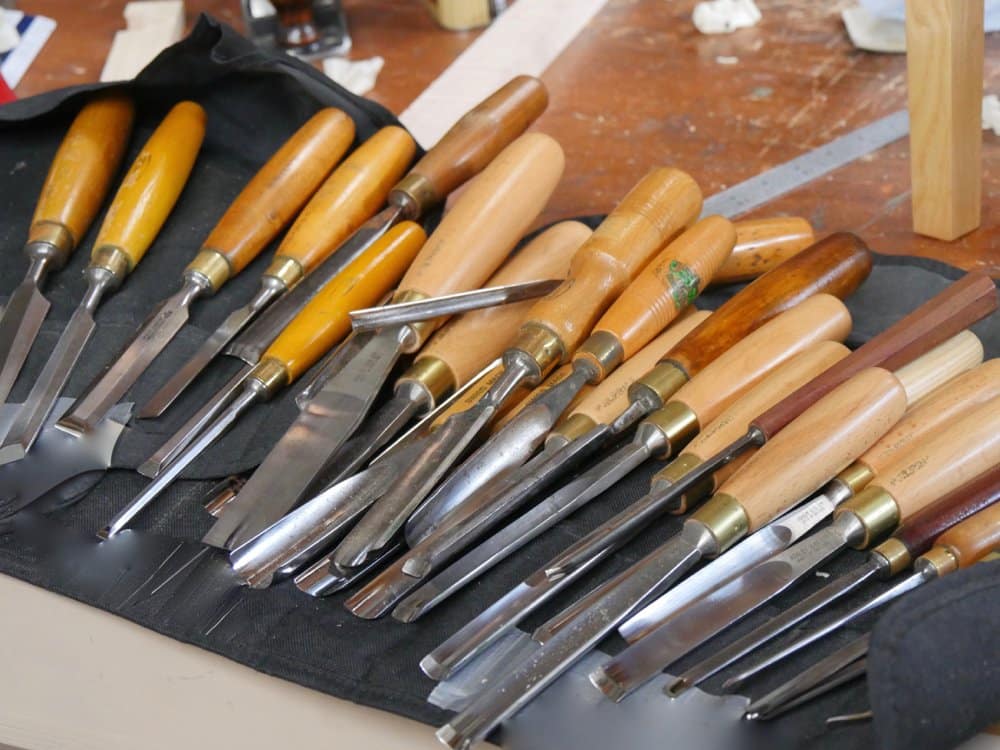Rescued From the Wolves
An email from a friend struck me recently and I responded by calling the number he gave me. “Tools for sale”, are the three words that struck me in the email, and then, “violin maker,” too. The tools were a mile from where I live and a few hours later I was sifting through box after box of a man’s life to in my own way try to piece together how a man had worked and what he’d work with and on there in this brick-built garage. The shavings in the throats of thumb planes and the mass of bridges and ebony fingerboards told me his work was generally repair, but then too a box full of uncut, maple neck blanks, another of uncut spruce bellies and yet another of maple or sycamore backs told me of his aspirations as a maker of instruments as well.
Generally the man was a maker of things and the tools were those mostly of a man who liked to make things from real wood. In no way was he a mass maker of anything and all the tools were as sharp as mine. Yes, he was a violin maker, but then some of the other tools were tools you might not find in violin making. Is violin making woodworking or instrument making? Are they one and the same or uniquely different? These are common enough questions and for me it’s simple. Any woodworker who understands wood could most likely make any of the bowed instruments. It’s the same with guitars and banjos, mandolins and so on. What elevates the instrument maker into higher realms of finer woodworking is his non acceptance of anything less than perfect when it comes to clarity and projection from the ‘voice’ of the instrument. This is the man who searches the very fibre of the wood for tones I might not understand or respond to. 


I was glad to have discovered these treasures once owned by another working man like me. The person selling the tools was helping the widow of the man that owned them. “The people that came wanted them for nothing,” the lady cried. “They offered me so little. Just wolves really. All I wanted was a fair price and to see the tools go to a good home where they would be used.” I don’t buy tools to sell on but to use. The tools I bought will indeed be used by family and friends and then students too. This makes me content. Restoration begins soon and I will enjoy using them to teach others the sharpening craft.


My respect! I baught some tools over the English webpage from eBay. Some of my tools (Stanley No. 4 and 5 , Sorby, Spears and Jackson Saws and Chisels and many Other Tools) come from working men, who retired. Me and my sons Love working with these old English Tools. aAnd i think the Tools you baught Are in the best Hands. Many Regards from the Ruhr in Germany, Carsten, Leon and Sean
Love of craft, love of trade, Paul, so happy to hear of rescue. I suppose the real question is how one can live so close and not know, The answer, at least mine, is craft workers don’t spend their effort telling others how wonderful what the are doing is. They work and do their best with an organic medium and their skills whether beginner or well advanced. It’s much longer than a marathon with mistakes and learning the entire time. I can’t think of a single project that I would not like to do again, only better, the second time, but we don’t and keep moving forward.
Over the last year or so since I started woodworking I’ve noticed the sharks circling estate sales and ebay, picking up the cheap job lots, splitting them into their constituent parts and selling them on at a premium with no effort to restore or repair them. The market encourages this behavior so it’s understandable but it leaves a really bad taste in my mouth. Seeing a pile of old saws sold for a tenner then seeing each individual saw being sold on for twenty quid plus each, the word vulture comes to mind. Same with the big chisel/gouge job lots that get split into 4 decent sizes and resold, again with no attempt to sharpen or polish.
The real shame is that the few really dedicated restorers and repairers who put good time into their work and barely get it back because they charge reasonable prices become harder to find in among the greed and laziness of the others.
I disagree emphatically with this comment. I often buy miscellaneous tools at garage and estate sales, re-selling tools I already have or don’t need, and keeping those tools that I’ll use in my shop. This allows me to acquire tools at a much lower cost than I otherwise would, and more often than not, rehabilitate vintage tools that were lying about rusting and neglected in a basement or garage.
Let’s say I do get a job lot of saws for ten dollars that I don’t need. Before I sell them, I remove the rust and sharpen them, fix up the handles and buff the brass fasteners, then sell them for thrice the money I paid. Is that doing something wrong? I don’t think so. In fact, I think the opposite. I’ve made some extra money to pay for tools I need and will use, and put back into use tools that were neglected and abandoned.
If you think I’m a “vulture” for doing the above I’m afraid i’ll have to strenuously disagree.
Of course not, you sound like one of the good ones, I apologize for any offense made.
Even if stuff does sometimes end up with a silly price tag and gets snapped up by a collector and not a user it’s still better than it ending up in a skip.
At least the tools are being circulated again. I stuggle against collectors who buy them to show not use. That is why we can struggle to get things for a fair price. I keep searching but often have to settle for the dregs. To collectors everywhere tools are to be used and so are toys!
I agree with you. There is nothing wrong with making some money.
I don’t really think people see buying tools to repair, restore and put back into service as being immoral. The post was actually about unscrupulousness by someone paying fair prices and dealing dishonestly in some way.
In the picture of gouged and chisels,some of the gouged look like the bevel is on the flute side.
I have just bought some old gouged and all have them on the flute side,but in your gouge sharpening video,the bevel is on the underside.
Is there a reason for the bevel being on the flute side.
Never heard it termed the flute side but it’s nice. The usual term is the cannel which is really channel. Flute seems more apt to me. The inside cannel is used for creating flutes in wood, mostly for decoration in some carving. It was once a very common gouge for use in pattern making where the pattern maker made wooden shapes for casting in sand where molten metals were poured into the hollow to create metal components.
Love these little nuggets of information about tools and how the were used 🙂
I really must go hunting for a better understanding around pattern makers.
Wow!
This post made my heart warmer!
🙂
Paul,
Good to hear a story with a happy ending. You got a great deal and she did too. When we are on the path and keep our eyes open many opportunities arise.
Looks like some really nice carving tools.
An instrument maker has a feel for tone woods and won’t make good instruments otherwise. Charlie Crabtree would come into my workshop years ago and pick up a couple of pieces of wood apparently at random. Both would have a real ring. He didn’t know how he did it but it happened too often to be chance. All his instruments are wonderful to play. It is not just the woodworking skills. I knew Dave Rubio when I was young. Dave too had that extra sense for tone woods. He made Julian Bream’s lute. And wonderful guitars: when I knew him he was a great flamenco guitarist. Being a luthier overtook his playing. I’ve seen acoustic guitars that looked wonderful but were bad to play. There is something arcane involved.
“The whole is greater than the sum of the parts.” I learned this phrase during my college work, I was a military veteran attending college nights and weekends while making a living as a carpenter. I really thought I understand the phrase at the time, but now at the age of 67 I understand it completely. I stand in the door of my shop and no longer see the tools I worked so hard for as a young man, I see my trade under one roof waiting for me to accomplish a task. Your post reminds me of the end of any career. My dad, now 90, has been an amateur radio operator (HAM) for almost 70 years and hardly a year goes by that he is not asked to help dispose of equipment for a fellow HAM. He asks nothing from the widow (or widower) and works very hard to return them a fair value for what was part of the departed’s life. My prayer is that at the end of my long dusty trail there will be someone that cares about “the whole” and not just the “parts”. I applaud your efforts Paul!
This story brought me back 20 years or so. I had a very similar experience. Old violin maker passed and his wife asked for help. Unfortunately, the vultures beat me to the punch, so I helped fairly price the remains. It was amazing how much he had packed into an 8×10 foot shop.
I was not in a position at the time to buy the lot, but the widow thanked me by gifting many of the tools her late husband had made himself. Clamps for bow making, finger planes, along with some of the wood he had collected over the years. I still have all the tools she gave me and have been using the wood on special projects over the years. I never knew the man, but every time I use his tools or wood I think back to that little shed.
You always lead the way Paul…
Thank you.
Aloha Paul,
So far away and yet we share so much .
As I recovered from an accident five years have passed . As I recovered I read as my nights were full of pain and very little sleep.
Where the flee markets are mostly full of the same Sharks that you see there , people with such greed , they stink of death !
I still use and love my father’s and grandfather’s tools .
Here we have many fine hardwoods that are mostly overlooked and get bulldozed under or hauled to the dump .
Sometimes I find tools that need very little to be repaired on E-bay . My #113 Stanley , I got sent from France for only $35 , was only missing its rear handle , I craved one out of ‘Kiawee’ , a wood so tuff it was used for roadway pavers in Texas .
I love your web site , it makes this distance bearable between us .
Aloha !
Paul nice find and glad you helped someone. I don’t buy tools to sell either but may upgrade one if I find a better one. I usually give tools I don’t need to others and try to help people who can’t afford to buy. I have a fairly decent set of hand tools for my Grandson and starting one for my Granddaughter. My son will get all of my tools when I can’t work anymore or pass away.
Steve